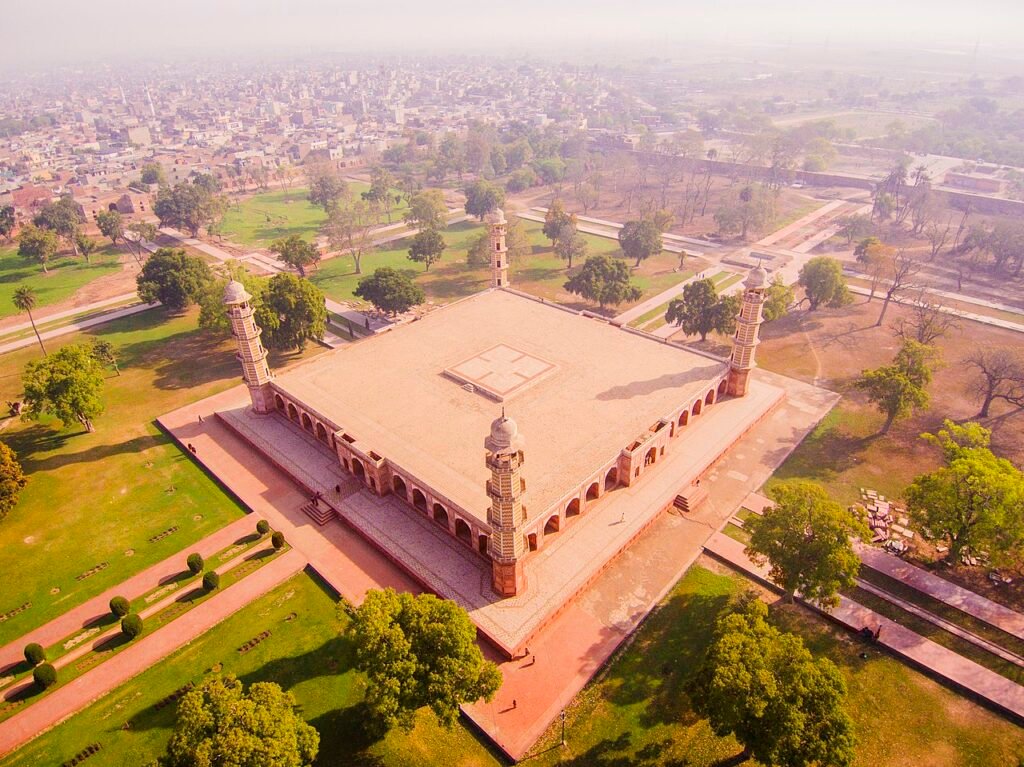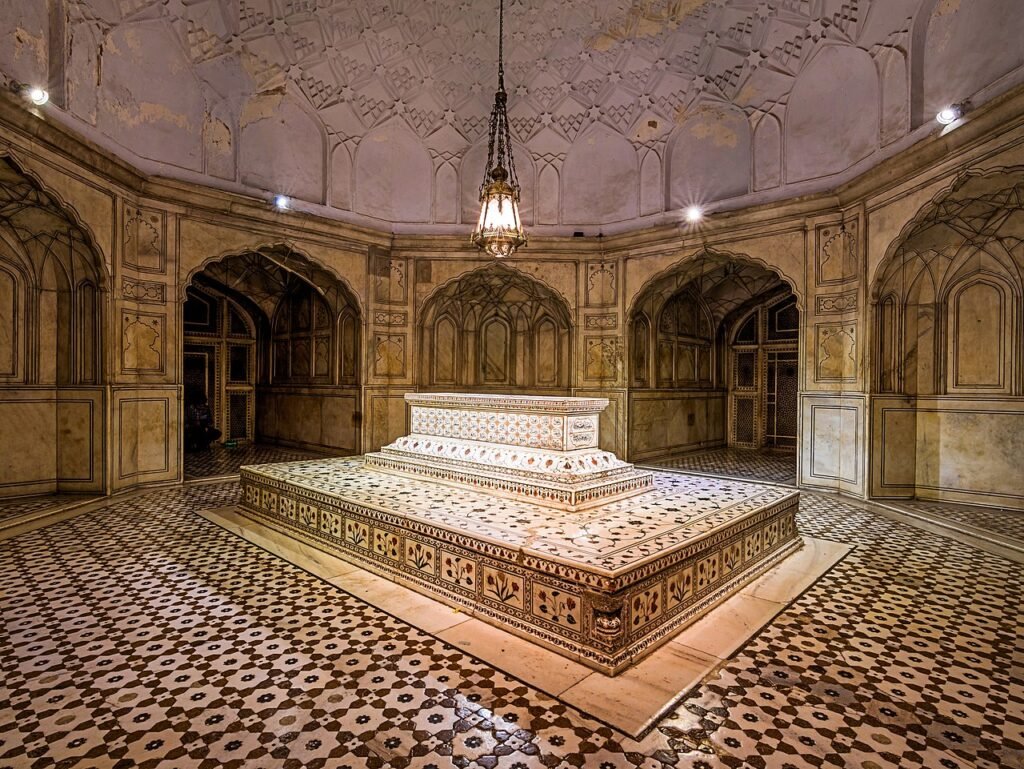The tomb of Jahangir also depicts Mughal architecture and reflects the great history of India. As told above, this is near Lahore in Pakistan and was a mere resting place for Jahangir, the Emperor of the Mughals, but it is a marvel as far as architectural design is concerned. To explain this monument of history, let us delve deep into architectural brilliance, cultural importance, and space that this structure occupies in the greater context of Mughal heritage.
Historical Background
Lovers of art and culture paid respect to his tomb by paying homage to it inasmuch as he proved friendly towards patrons of the arts. Immediately following his death in 1627, his son commissioned the work to begin on Jahangir’s magnificent tomb. It is here that the design and completion of this monument relate and depict how the Mughal Dynasty remained on par with their promise to excellence in the field of architecture. Architecture Design Jahangir’s tomb is based on the Persian and Mughal architectural designs. The outward form of the mausoleum assumes a square with a great central dome characteristic in the Mughal architecture. The tomb itself is rendered in sandstone and marble, intricately carved outside with floral patterns and calligraphy. Such kinds of materials used enhance its aesthetic look and make it strong enough.

Location and Setting
It stands within walled gardens that are intended to represent the Mughal vision of paradise. Amidst the green surroundings in the Shahdara Bagh area, it was supposed to give an atmosphere of tranquil peace which must heighten the splendor of the tomb architecture. In sitting on the riverbank of the river Ravi, it enhances scenic beauty as well and has been counted as one major monument of the area.
History and Cultural Significance
Besides being the site of one of the most pivotal historical sites pertaining to Mughal history, Jahangir’s tomb is also a beginning in terms of the genre of Mughal tomb architecture.
Reason being, it was indeed a leading methodology in the art of tomb design at that time by integrating a series of artistic influence into the structure. It not only has influenced the subsequent Mughal architecture design and construction method but also furthers the entrenchment of the legacy which the dynasty has had on that sphere of architecture. Major Features of the Tomb
Central Mausoleum innermost structure of the tomb houses the grave of the Emperor. The central huge dome formed the centre of the tomb on the base of an octagonal resting and was flanked by a row of walled arches with minute carvings.
Water Features and Gardens: The tomb was set in a large walled garden featuring water channels, fountains, and lawns interspersed with flower beds. It became typically the Mughal formula for the idea of paradise on earth. Inscription and Epigraphy: The tomb has rich inscriptions in the Persian language and the engraving of the events of Jahangir’s rule and architectural doings of time. Restoration and Preservation of the Tomb
Centuries of natural erosion, along with the turmoil of political events, have taken their toll on the tomb. Initial restoration efforts were directed towards the stabilizing of its structure and the preservation of artistically finer details. In more recent years, modern conservatory efforts have been engaged in maintaining its historical worth while seeking to minimize deterioration brought about by time and weather.
Tourism and Accessibility
As a matter of fact, the tomb of Jahangir is one place foreigners visit either due to curiosity related to Mughal history or Mughal architecture. It is rather accessible from major cities like Lahore which have a number of traveling options. Furthermore, one actually has to go to the gardens of the tomb and absorb an understanding about the history behind this peculiar building and appreciate its architectural beauty.
Comparison with Other Mughal Tombs
While the Taj Mahal is built mainly in white marble and symmetrically, Humayun’s Tomb is chiefly worthy due to the Persian influence in its design. Jahangir’s tomb has been able to achieve a completely new fusion of art and architecture.
Events and Anecdotes Worth Notice
Most of its history is recorded within its precincts and walls, not in the least of the historical occurrences and legends that have been recorded throughout its many centuries, especially those that involve royal visits and its influence on further projects in regards to architecture. Tales give reason to its importance to the monument.
The presence of the Tomb of Jahangir can still be recognized upon both art and architecture today. Principal designs and the arts have been evoked within modern architectural work in order to attest to its continuing presence upon the cultural landscape.

Future of the Tomb
The stray effort at restoring and preserving the Tomb of Jahangir goes on. Infrastructure development works in its premises and further restoration work are in the pipeline so that this specimen of art and history may be retained for more and future generations to get inspired and fascinated by.
Conclusion
The Jahangir tomb is a sign of excellence in architecture and tends more to be a sign of the grandeur of the Mughal Empire than something historic. A historic building that is designed and culturally significant assumes a major constituent role in the abounding heritage of India. No doubt, when restorative processes are on, it shall remain inspiring and lovely to look at.
Frequently Asked Questions
Is it the importance of the building? It is one of the major specimens of Mughal architecture and has now converted into a symbol of the success of Mughal Empire within the arena of art and culture. The body remnants of Emperor Jahangir are also available in the tomb.
Where is the Jahangir’s Tomb located? It is located in Shahdara Bagh, which is close to Lahore in Pakistan.
Thus, Jahangir Tomb’s architecture was continued by his son, Emperor Shah Jahan himself-said to be a designer of the Taj Mahal.
Which are the major architectural features of the tomb? Among them are the great central dome, the intricate carvings, surroundings of the Mughal garden with running water.
Is Jahangir’s tomb touristy? Yes, it certainly is accessible to visitors who come in altogether from different directions.




